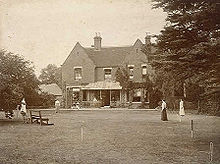Our website is made possible by displaying online advertisements to our visitors.
Please consider supporting us by disabling your ad blocker.
Stone Tape theory

The Stone Tape theory is a pseudoscientific claim that ghosts and hauntings occur when historical information is released from rocks and other items. The idea of materials holding information from emotional or traumatic events aligns with views of 19th-century intellectualists and psychic researchers, such as Charles Babbage, Eleanor Sidgwick and Edmund Gurney.
Contemporarily, the concept was popularised by the fictional ghost story film The Stone Tape broadcast on BBC television in 1972.[1][2] Following the play's popularity, the idea and the term "stone tape" were retrospectively and inaccurately attributed to the British archaeologist turned parapsychologist T. C. Lethbridge, who believed that ghosts were not spirits of the deceased, but were simply non-interactive recordings similar to a movie[clarification needed].
- ^ Colin Stanley (2011), Around the Outsider: Essays Presented to Colin Wilson on the Occasion of His 80th Birthday, John Hunt Publishing, pp. 296–, ISBN 978-1-84694-668-4
- ^ Cite error: The named reference
SchickVaughn2013was invoked but never defined (see the help page).
Previous Page Next Page


